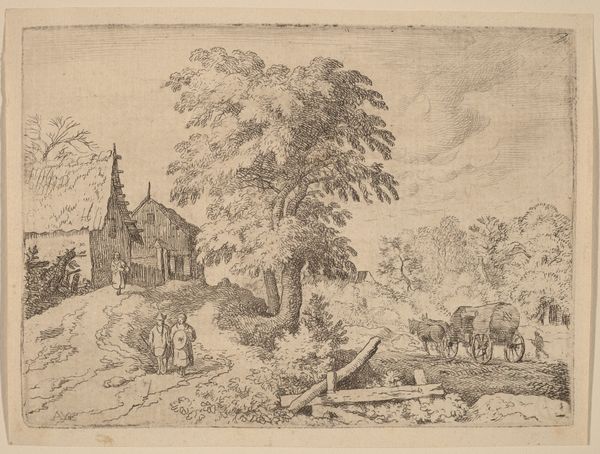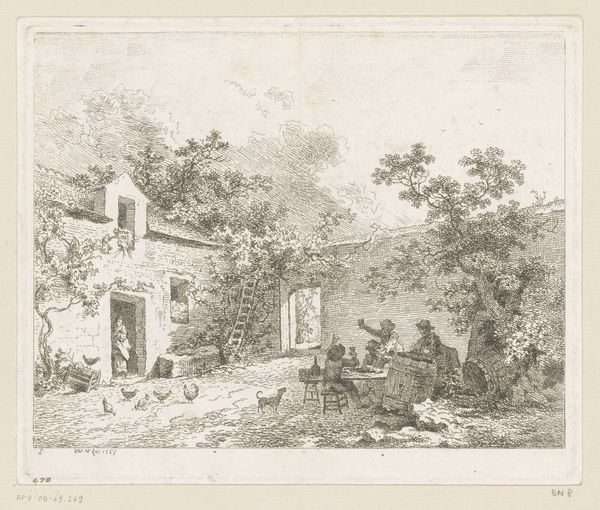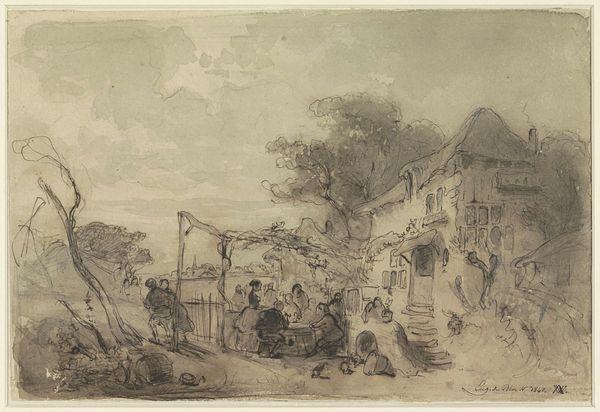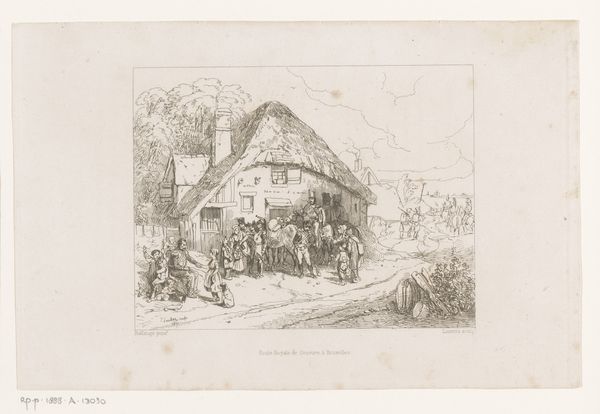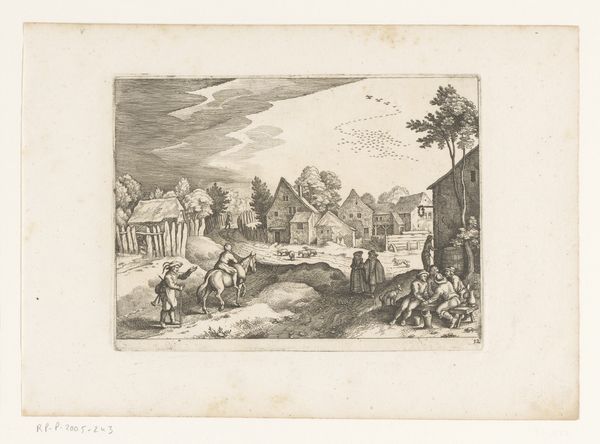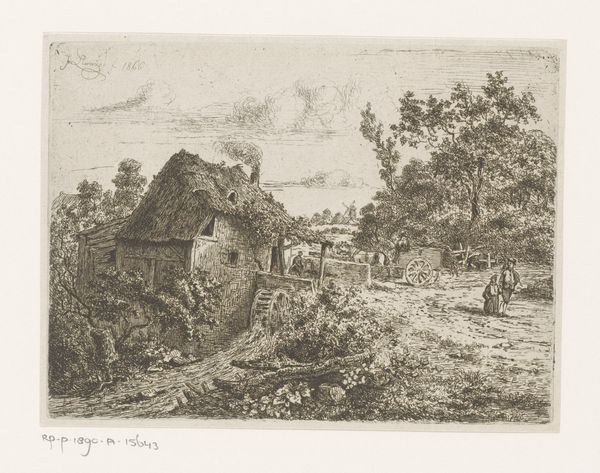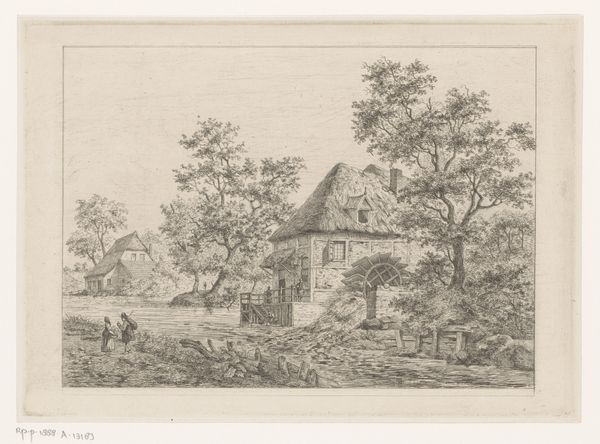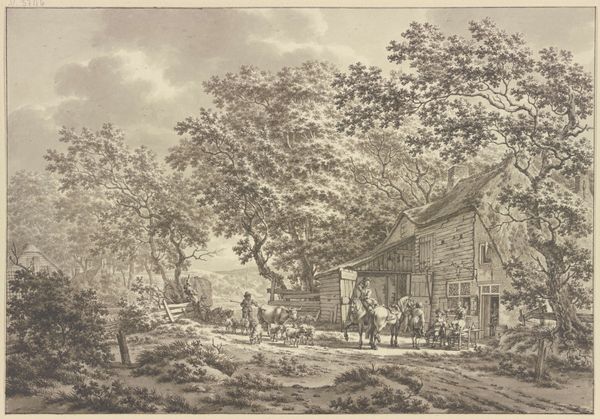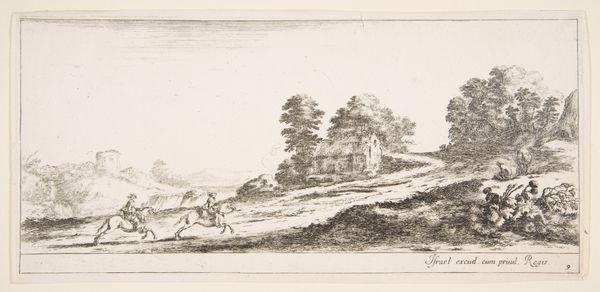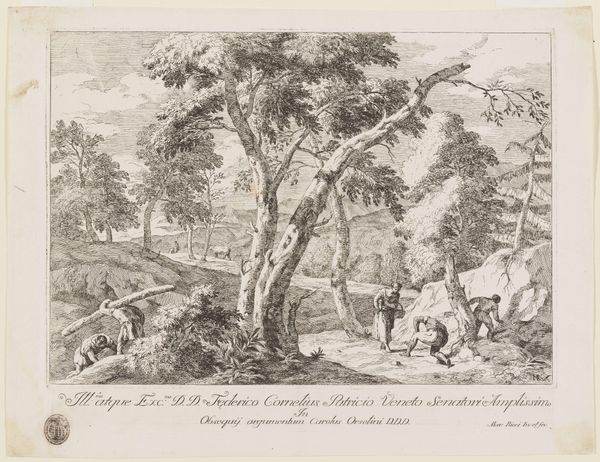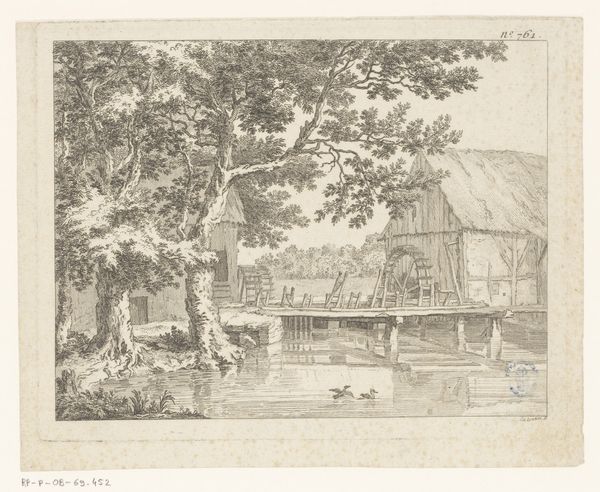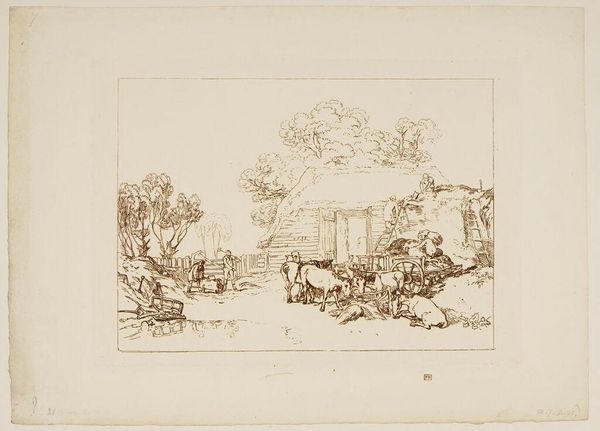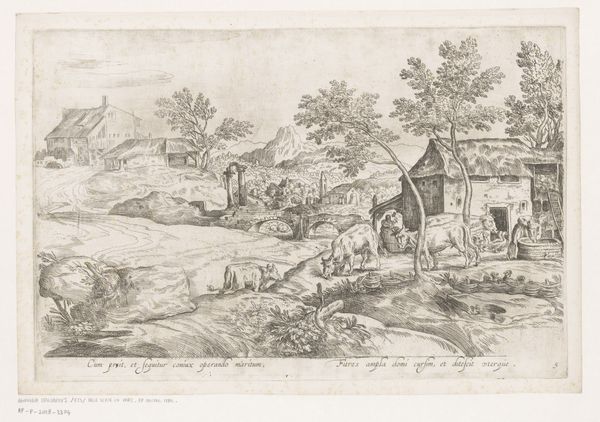
drawing, print, etching, paper, ink
#
drawing
#
ink drawing
# print
#
pen sketch
#
etching
#
landscape
#
etching
#
paper
#
ink
#
genre-painting
Dimensions: 171 × 245 mm (image/plate); 224 × 295 mm (sheet)
Copyright: Public Domain
Curator: This etching, titled "Nest of the Poor", was created by Auguste-Louis Lepère in 1909. It's currently housed here at The Art Institute of Chicago. Editor: Immediately, it feels incredibly dense but fragile at the same time. There’s a stark contrast, wouldn't you say, between the intricate detail and the clear vulnerability of the figures depicted. Curator: It's true. Lepère employs a very complex technique, especially considering this is primarily ink on paper. If you look closely, you can see how he utilizes hatching and cross-hatching to create depth and texture, really giving a weightiness to what might otherwise feel like a simple sketch. Editor: And the composition! See how the house acts as a visual anchor, but all the figures are arranged low to the ground. What does that communicate, do you think? An earthy connection, or perhaps something about being grounded in hardship? Curator: Absolutely. The thatched roof practically melts into the landscape; this kind of building feels utterly of its environment. These techniques serve to illustrate both the intimate family settings of the rural poor but also the very real hardships associated with it. Editor: I agree completely. The light and shadow playing across the composition further intensifies those emotions, wouldn’t you say? The limited range really allows it to pack an additional punch. It also calls to mind a visual language reminiscent of printmakers like Rembrandt and Dürer in earlier centuries. Curator: Exactly, Lepère was consciously working within a larger historical context of printmaking, a dialogue with past masters, even while tackling contemporary social themes. There’s a political current as well as an artistic endeavor, I suppose. Editor: A visual echo, maybe, of social concerns reverberating through time. "Nest of the Poor," after all, offers an enduring commentary on both family life and social justice. Curator: In the end, it asks more than it answers, perhaps provoking conversations about these crucial topics for centuries to come. Editor: Right—I like when art just plants itself and lets things bloom, lets viewers make something new happen each time.
Comments
No comments
Be the first to comment and join the conversation on the ultimate creative platform.
